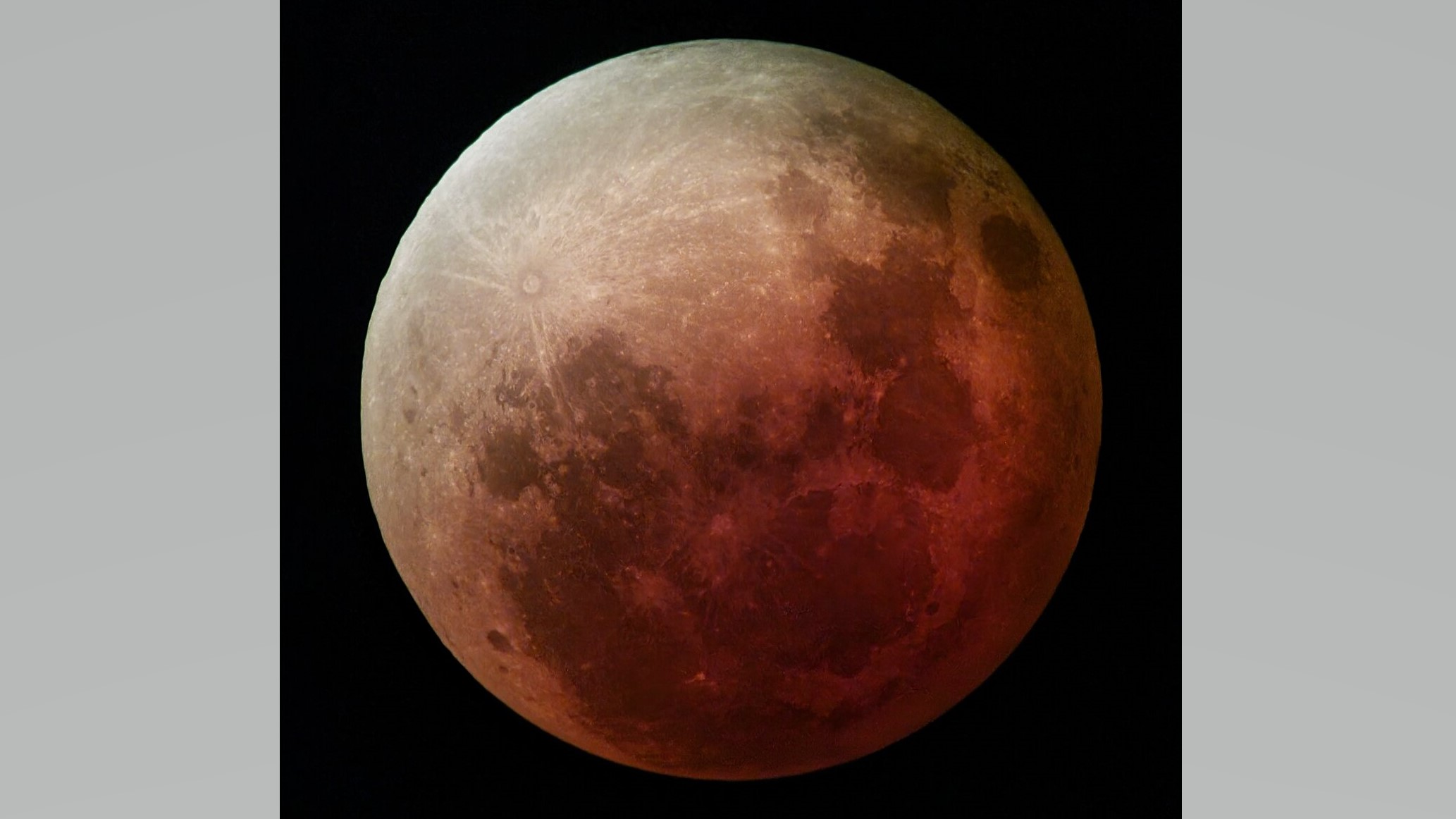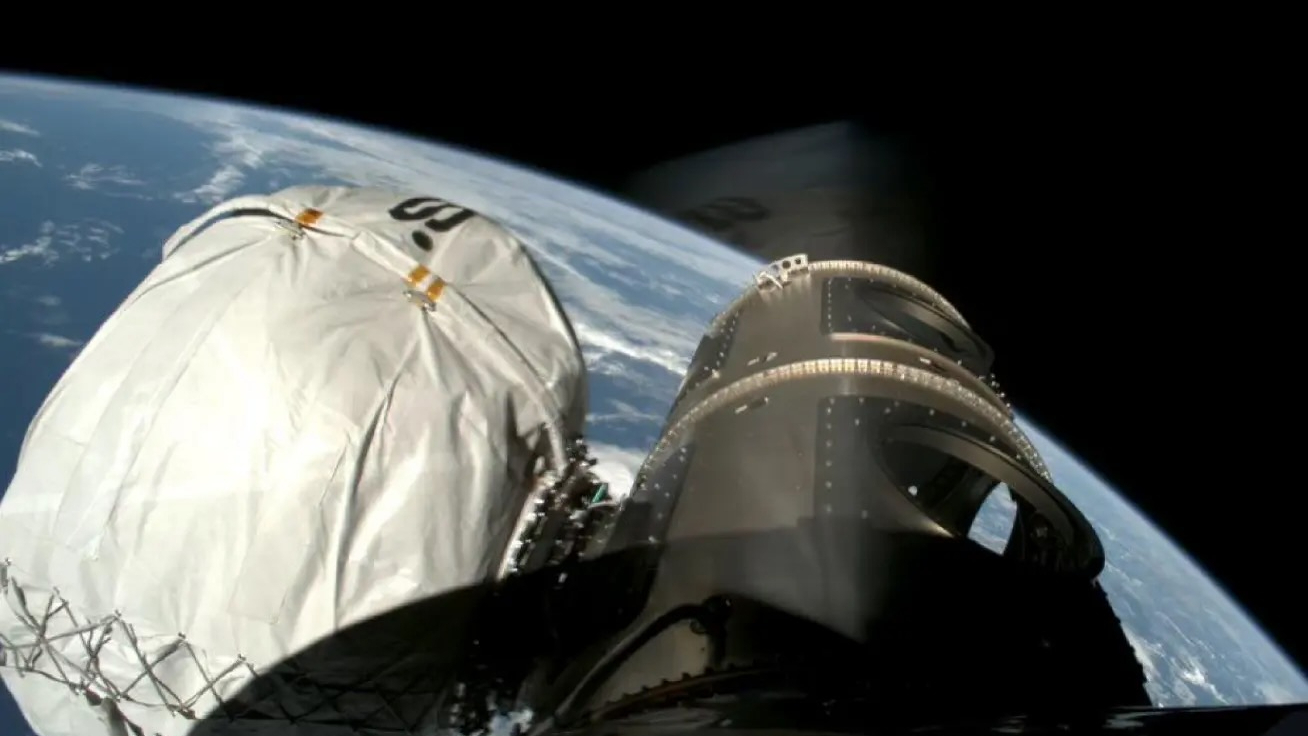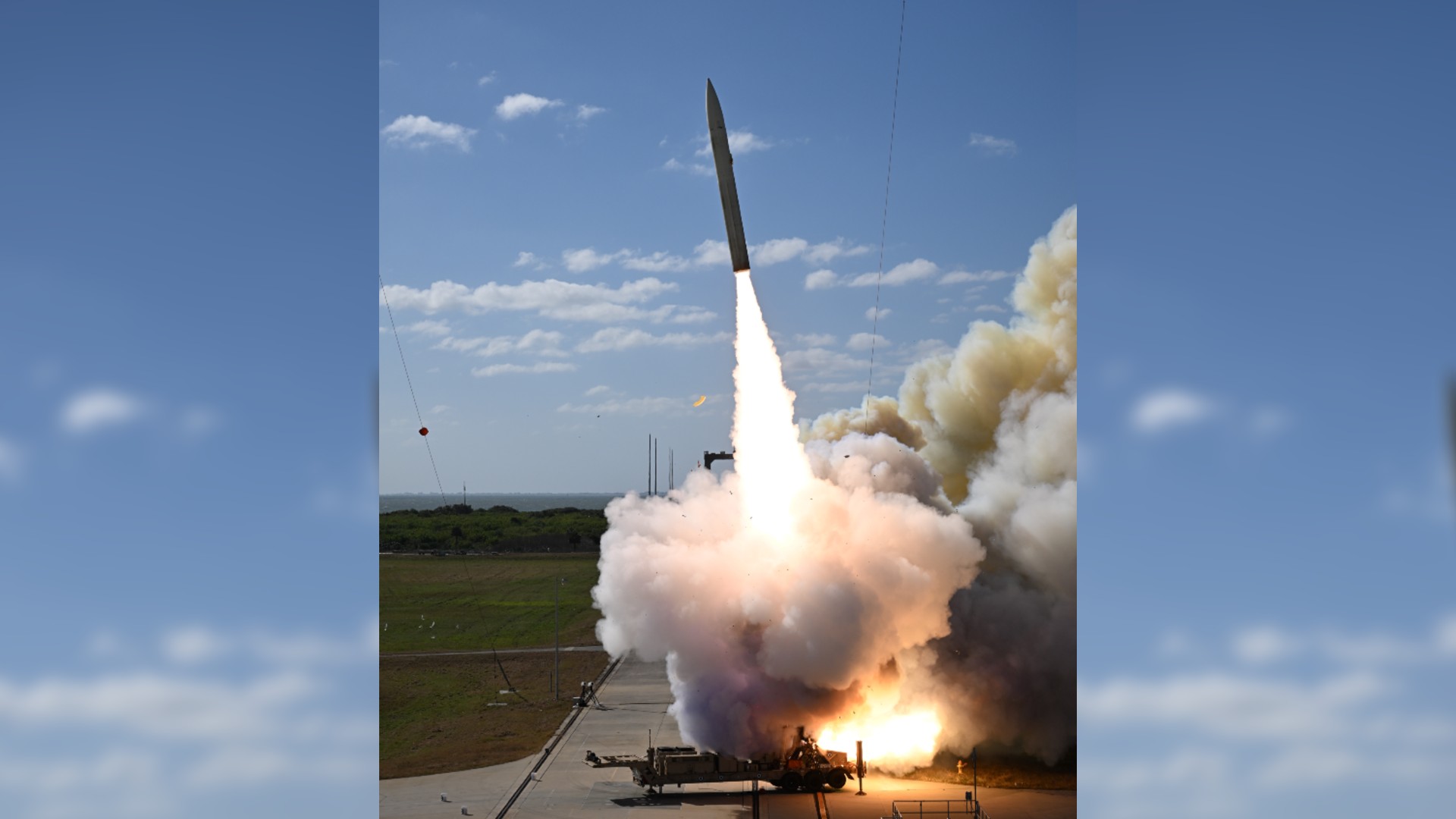Super Flower Blood Moon lunar eclipse glows eerie red in new photo

The eclipsed moon glows an eerie deep red color in a new photo of the total lunar eclipse that occurred earlier in May.
The European Southern Observatory (ESO) shared a new image of the Super Flower Blood Moon lunar eclipse, taken on the night of May 15 using telescopes at the ESO's Paranal Observatory in the Atacama Desert of Chile, according to a statement from the observatory.
A total lunar eclipse, which happens as the full moon moves into the deep umbral shadow of the Earth, was visible from parts of the Americas, Antarctica, Europe, Africa and the eastern Pacific on May 15 and 16. At the same time, the full moon had reached perigee — its closest to Earth of the month — making it a Super Blood Moon eclipse.
Related: Amazing photos of the Super Flower Blood Moon lunar eclipse of 2022
During a lunar eclipse, the Earth is positioned directly between the sun and the moon. As a result, the Earth blocks some of the sun's light and casts a shadow across the lunar surface. This, in turn, causes the moon to appear red as the sun's rays interact with Earth's atmosphere.
"Light from the sun contains a whole spectrum of colors. Blue light is dispersed by the atmosphere through a process called Rayleigh scattering (which makes the sky blue) while red light can pass through the atmosphere more easily, becoming slightly deflected," ESO officials explained in the statement. "This red light reaches the moon's surface, giving rise to its dramatic crimson hue."
The recent photo, shared by the ESO on May 23, was taken during totality, when the Earth blocks the most sunlight. It was photographed using an amateur-class telescope nicknamed UT5 at the Paranal Observatory.
Get the Space.com Newsletter
Breaking space news, the latest updates on rocket launches, skywatching events and more!
The next full moon, called the full Strawberry Moon, will occur on June 14. It also happens to be the second supermoon of 2022. It will appear large and golden to viewers looking towards the southeast shortly after sunset. You can prepare for the next full moon with our guide on how to photograph the moon, along with our guides on best cameras for astrophotography and best lenses for astrophotography.
Editor's Note: If you snap an amazing photo of the full moon and would like to share it with Space.com's readers, send your photo(s), comments, and your name and location to spacephotos@space.com.
Follow Samantha Mathewson @Sam_Ashley13. Follow us on Twitter @Spacedotcom and on Facebook.
Join our Space Forums to keep talking space on the latest missions, night sky and more! And if you have a news tip, correction or comment, let us know at: community@space.com.

Samantha Mathewson joined Space.com as an intern in the summer of 2016. She received a B.A. in Journalism and Environmental Science at the University of New Haven, in Connecticut. Previously, her work has been published in Nature World News. When not writing or reading about science, Samantha enjoys traveling to new places and taking photos! You can follow her on Twitter @Sam_Ashley13.









